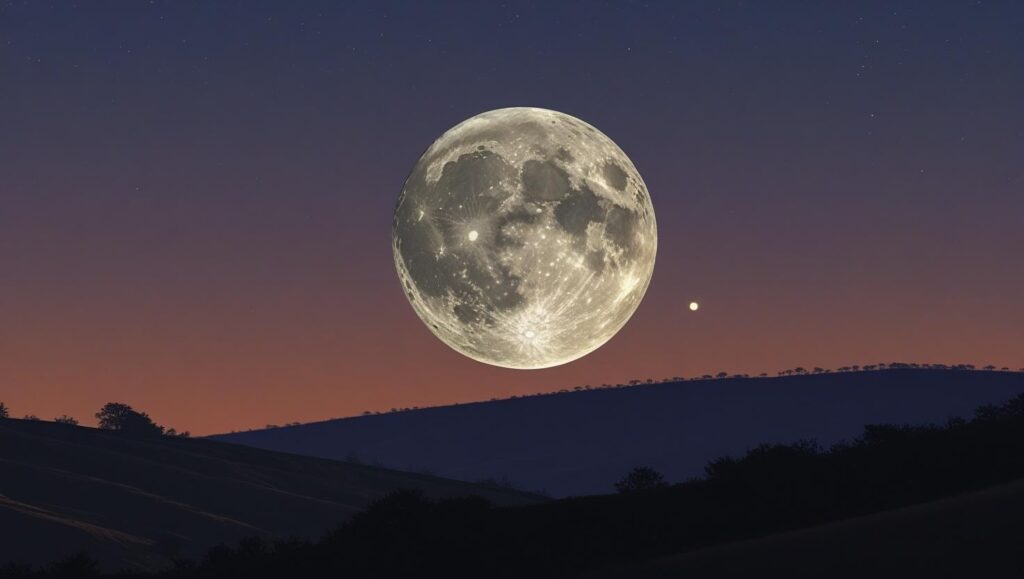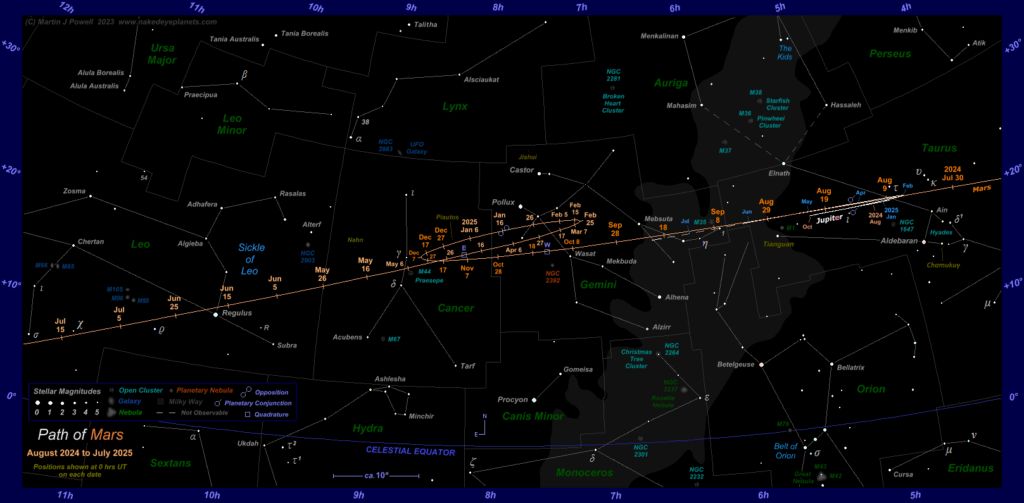Stargazers are in for a midsummer treat this month as July’s Full Buck Moon will be accompanied by the visible presence of Mars and Saturn. The celestial event, peaking on the evening of Thursday, July 10, 2025, will offer skywatchers across the globe a chance to witness the full moon in its peak illumination while also spotting two of our solar system’s most captivating planets.

This month’s full moon, known as the Buck Moon, will reach its maximum brightness at 4:37 p.m. Eastern Daylight Time (20:37 UTC), according to the U.S. Naval Observatory. While the peak occurs during daylight hours for those in North America, the best viewing opportunity will be just after sunset as the moon rises in the southeastern sky, appearing large and golden.
A Celestial Alignment for Stargazers
This celestial event is notable for the relatively close proximity of three major celestial bodies from our viewing perspective on Earth. While the moon, Mars, and Saturn will appear near each other in the sky, they are, of course, millions of miles apart.
On the evening of July 10, after the sun sets, observers can look towards the southeastern horizon to see the fully illuminated Moon. Mars, recognizable by its distinct reddish hue, will be visible in the western sky, setting a few hours after dark. According to NASA, the Red Planet will be sinking toward the horizon and will set before midnight in mid-northern latitudes.
Later in the evening, Saturn will become visible. The ringed planet rises in the east around midnight and will be high enough for clear viewing in the hours before dawn. “Saturn is relatively easy to spot because the region of sky it is in has few bright stars,” notes a guide from Space.com. For those with binoculars or a small telescope, the sight will be even more rewarding.
How to Optimize Your Viewing Experience
To make the most of this stargazing opportunity, experts recommend finding a location with a clear view of the horizon and minimal light pollution. Urban and suburban light can significantly wash out the night sky, making fainter objects like planets harder to discern.
“Timing is key,” advises The Old Farmer’s Almanac. “The best time to witness the Buck Moon is 30 to 60 minutes after sunset.” This allows the sky to darken sufficiently while the moon is still low, often creating a dramatic visual effect known as the “Moon Illusion,” where it appears larger than when it is higher in the sky.

The Science and Lore Behind the Buck Moon
The name “Buck Moon” is rooted in Native American and colonial traditions, as detailed by sources like The Farmer’s Almanac. It marks the time of year when the antlers of male deer (bucks) are in a state of rapid growth. The antlers, which are shed and regrown annually, are covered in a soft velvet layer during this period.
This full moon is also known by other names in different cultures, including the “Thunder Moon,” due to the frequent thunderstorms common in the Northern Hemisphere during July, and the “Hay Moon,” for the hay-making season.
A full moon occurs when the Earth is positioned directly between the Sun and the Moon. This alignment means that the side of the Moon facing Earth is fully illuminated by sunlight. According to the Royal Museums Greenwich, the July full moon will be situated in the constellation of Sagittarius.
Beyond the Full Moon: Other Celestial Events in July
While the Full Buck Moon is a highlight, July 2025 offers several other astronomical points of interest. Later in the month, a waning moon will have close encounters with other celestial objects.
- July 16: A waning gibbous moon will appear near Saturn and Neptune in the pre-dawn sky. While Saturn will be visible to the naked eye, a telescope will be required to spot the much fainter Neptune.
- July 28: A waxing crescent moon will appear very close to Mars and Saturn in the evening sky, offering another beautiful pairing for observers.
These events provide continued opportunities for both amateur and seasoned astronomers to enjoy the summer night skies. As explained by Adler Planetarium educators, summer offers a dynamic celestial calendar as Earth’s orbit provides different views of the solar system.
The month’s celestial proceedings serve as a reminder of the constant and predictable motions of our solar system. For many, they offer a moment of connection to the cosmos and the natural rhythms that have been observed for millennia.
Read More
Astronomers Announce Discovery of New Dwarf Planet in Extreme Orbit Beyond Pluto
